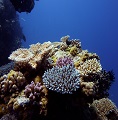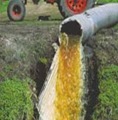
Five South Asian countries namely Bangladesh, India, Maldives, Pakistan and Sri Lanka share the Indian Ocean and are part of the South Asian Seas Programme. With a view to protect the marine environment in the region, South Asia Co-operative Environment Programme (SACEP) and the International Maritime Organisation (IMO) undertook a jointly funded project to assist the region in developing a South Asian Regional Oil Spill Contingency Plan in 1989. A draft Regional Oil Spill Contingency Plan and other background documents were reviewed by the regional stakeholders in Colombo, Sri Lanka from 14th to 16th December 1999 and the revised plan was shared with the national governments for their concurrence.

South Asian Seas region lies within one of the busiest shipping lanes globally as it falls within the oil conveyor belt from the Gulf to East Asia. Therefore, ballast water can pose serious economical and ecological damage through introduction of invasive and alien species to the coastal and marine waters. The International Convention for the Control and Management of Ships’ Ballast Water and Sediments (BWM) prescribe measures to prevent the potentially devastating effects of the spread of harmful aquatic organisms carried by ships’ ballast water. The BWM Convention was adopted on 13 February 2004 and is not yet in force, however out of the five maritime countries of South Asia, only Maldives is signatory/party to the BWM Convention

The South Asia Coral Reef Task Force (SACRTF) has been established under the South Asia MCPA (Marine Conservation and Protected Areas) project, through funding from the European Union, to facilitate coordination in the management of coral reefs and associated ecosystems at a national level, and to promote collaborative action at the regional level, encouraging trans-boundary responses to shared environmental challenges.

For addressing the land based sources of Marine pollution, in relation to development of a Regional Strategic Action Plan for the countries along the Bay of Bengal, SACEP developed a project concept titled ‘Controlling Nutrient Loading and Eutrophication of Coastal Waters of the South Asian Seas Region’ with the inputs from UNEP-GPNM (Global Partnership on Nutrient Management). The main objective of the project is to reduce and control of nutrient loading into the coastal waters of the South Asian Seas Region through development of a Regional Action Plan and Policy Forum/Framework.

South Asian Seas Programme of SACEP together with UNEP have initiated an activity to develop a South Asia Regional Marine and Coastal Biodiversity Strategy in partnership with various other stakeholders. The Strategy was prepared, in parallel with the National Biodiversity Strategies and Action Plans (NBSAPs) and it will assist the five maritime countries of South Asia to achieve Aichi Biodiversity targets relevant to coastal and marine biodiversity on national as well as regional level. This process will support and guide future revision of the South Asian Seas Action Plan.